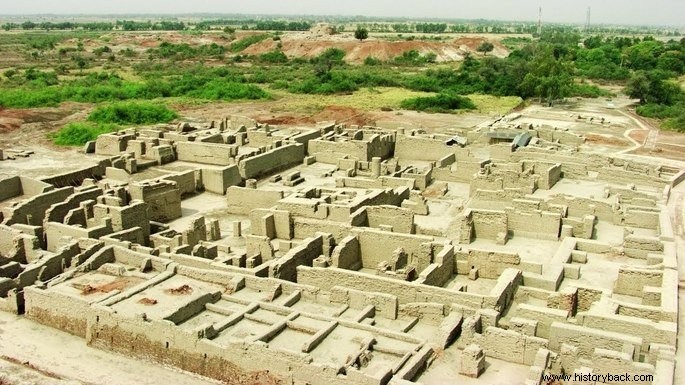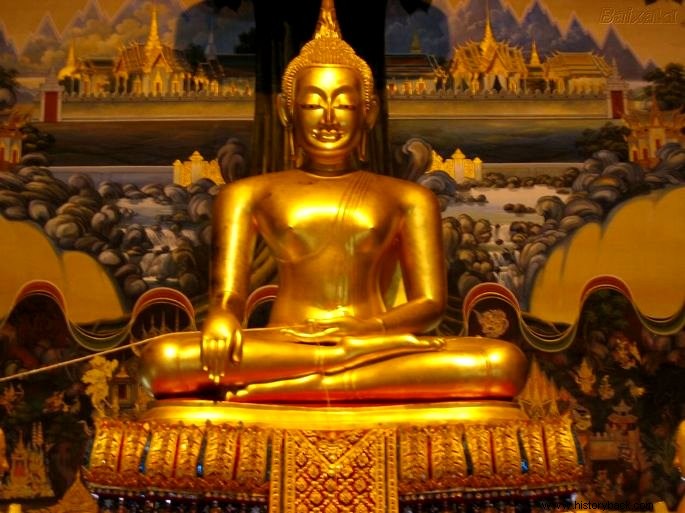The Indian Civilization it is one of the oldest on the planet and there is archaeological evidence that it would have started 75 thousand years ago.
Its formation took place along the Indus River which was inhabited by hunters, gatherers and nomads. Slowly, these began to organize themselves into villages, around 5000 BC, and became known as the Indus Valley people.
From there departed the peoples who began to live throughout Europe and Asia, between 4,000 and 1,000 years BC, the so-called Indo-Europeans.
Characteristics of Ancient India

In this period, there were two great cities, Mohenjo-Dara and Harapa, which allow us to understand what society was like in Ancient India.
There, archaeologists have found evidence of a metropolis that was home to around 80,000 people and who used baked brick in their buildings. The symmetrical planning of its streets, the water supply and sewage system stand out.
Most of the inhabitants, however, lived in the countryside and agriculture was the basis of the economy. Fruits such as melons were grown, as well as peas and wheat.
Society in Ancient India
In this region and historical moment, society was egalitarian. Proof of this were the very similar buildings and few weapons reserves, which points to the lack of concern for conquest and defense.
The Indus Valley civilization died out around 1500 BC. and there are still no conclusions about the facts that led to its end. Among the theories is the occurrence of a great earthquake that would have disintegrated entire cities and forced the mobility of the population. The possibility of invasion by neighboring peoples is also not ruled out.
See also:River GangesVedic Period
Around 1500 BC, the region is occupied by Indo-Europeans, who left the regions of the Black Sea and the Caspian Sea, when the Vedic Period begins.
The language spoken by these peoples was similar to that used in India, as evidenced by artifacts engraved in Sanskrit in a collection called Vedas ("to know" in Sanskrit), compiled between 1500 BC. and 900 BC
The collection summarizes the teachings of Hinduism and is divided into four fascicles:Rigveda, Yajuryeda, Samayeda and Atharvaveda.
In addition to the influence of the language, India was impacted by new customs, beliefs and social organization. It would be at this historical moment that the region started to use the caste system, with the permanent division of people in society according to their birth.
See also:Caste System in IndiaReligions of Ancient India

In this period, the two great religions that shaped its culture were consolidated in India:Hinduism and Buddhism.
Hinduism
Hinduism is a polytheistic religion where it is believed that there is a pre-established universal order for all human beings. For its believers, the secret of happiness is to accept the destiny that the gods have imposed on each creature.
According to data from the Indian Ministry of Interior, in 2001, 80% of the population declared themselves to be Hindus.
See also:HinduismBuddhism
Buddhism is a religion based on the teachings of Siddhartha Gautama, called the Buddha. Its main lesson is that suffering exists because of desire and if we eliminate it from our lives, we will stop suffering.
This is the belief of some 8 million Indians, according to India's Home Office data from 2001.
See also:BuddhismForeign Invasions in Ancient India
The people, now made up of Indo-Europeans and the remaining Indians, occupied the entire territory around 1000 BC, and by mid-600 BC, it was divided into 16 kingdoms. The first foreign invasions occur in 520 BC, when the Persians take the region from the north in incursions led by Darius the Great.
Darius' rule remains for around 200 years, until the arrival of Alexander the Great, who invaded South Asia and occupied part of India.
There are more texts on this subject for you :
- India
- Indian Culture
- Independence of India
- Caspian Sea
- Ancient China
